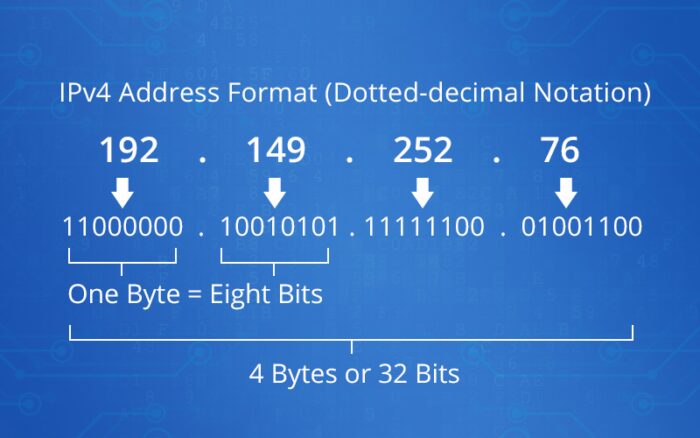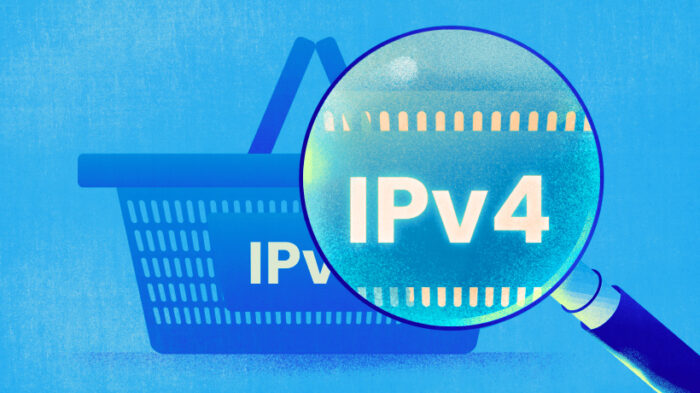
In the ever-evolving landscape of the internet, IPv4 (Internet Protocol version 4) addresses are a finite and valuable resource. With the rapid growth of connected devices, the exhaustion of available IPv4 addresses has become a pressing issue. This scarcity has led to the emergence of a secondary market where organizations can buy and sell IPv4 addresses. In this blog post, we’ll explore the reasons behind the IPv4 shortage, the IPv4 market, and a step-by-step guide on how to buy IPv4 addresses.
The IPv4 Shortage
IPv4 addresses are the numerical labels assigned to devices on a network, allowing them to communicate with one another over the internet. Each IPv4 address is a 32-bit number, allowing for a total of approximately 4.3 billion unique addresses. When the internet was in its infancy, this number seemed more than sufficient. However, as the Internet grew exponentially, the supply of Internet Protocol version 4 addresses quickly ran out.

Several factors contribute to the IPv4 shortage:
- Device proliferation: The explosion of smartphones, IoT devices, and other internet-connected gadgets has significantly increased the demand for addresses.
- Delay in IPv6 adoption: IPv6, with its 128-bit space, was designed to replace Internet Protocol version 4 and address the exhaustion issue. However, its adoption has been slow, leading to continued reliance on Internet Protocol version 4.
- Legacy: Many organizations hold unused or underutilized blocks. These unused lessons are a valuable resource in the market.
The IPv4 Market
To meet the demand, a secondary market has emerged where organizations can buy and sell blocks. The market functions similarly to any other commodity market, with prices fluctuating based on supply and demand. Here are some key points to consider about the market:
- Brokerage firms: Numerous brokerages and marketplaces exist to facilitate transactions between buyers and sellers. These brokers help ensure a smooth and secure transfer.
- Regional Internet Registries (RIRs): Some RIRs have established policies allowing for the transfer within their regions. Organizations may need to justify their need for addresses and pay fees to the RIRs.
- Legal and regulatory considerations: When buying them, it’s essential to be aware of the legal and regulatory requirements in your region and the region of the seller.

Buying IPv4 Addresses: A Step-by-Step Guide
Now that we understand the importance and the dynamics of this market, let’s delve into the steps involved in purchasing:
- Assess your needs: Determine how many speeches your organization requires and the specific use cases for them. This will help you identify the size of the block you need.
- Find a reputable broker: Research and select a reputable broker or marketplace. Look for firms with a proven track record and positive client reviews.
- Verify legal and regulatory requirements: Ensure that you understand the legal and regulatory requirements transfers in your region and the region of the seller.
- Negotiate a deal: Contact potential sellers through the broker and negotiate the terms of the transaction, including the price per it, payment terms, and any other conditions.
- Due diligence: Perform due diligence to verify the legitimacy block being sold. This may include checking the address’s history and ensuring it is not blacklisted.
- Transfer agreement: Draft a transfer agreement that outlines the terms and conditions of the transaction. The agreement should specify the block, purchase price, and transfer process.
- Transfer process: Work with the broker to facilitate the transfer from the seller to your organization. This process may involve updating the relevant records with the RIR.
- Post-transfer testing: After the transfer is complete, thoroughly test the new IPv4 addresses to ensure they function as intended within your network.
Evaluating the Cost
The marketplace is a dynamic environment where understanding cost structures is as crucial as the addresses themselves. Prices are influenced by the scarcity of the resource, the size of the address blocks available, and regional market demands. Prospective buyers must navigate this complex terrain to secure the necessary IP resources without overextending their financial reach.

Market Trends and Price Fluctuations
Keeping an eye on market trends is essential for organizations looking to purchase them. Prices can swing significantly, reflecting the global balance of supply and demand. For instance, economic events can lead to a sudden release from companies scaling down, affecting prices. Conversely, technological booms can tighten demand, driving prices up. Timing purchases when the market is favorable can lead to substantial cost savings.
Cost Analysis and Budgeting
When planning to acquire them, a detailed cost analysis is vital. Budgeting for IPv4 addresses extends beyond the acquisition phase, encompassing maintenance and potential expansion. It’s prudent to account for ongoing costs such as network management and reassignment. Additionally, consider the resale value, should your organization’s needs change or IPv6 adoption become a reality.
Strategic Considerations for IPv4 Acquisition
A strategic approach to the IPv4 market not only serves immediate needs but sets the foundation for future network stability and expansion. Acquiring IPv4 addresses requires foresight and an alignment with broader network and business objectives.

Long-Term Network Planning
Acquisition should be a part of your organization’s long-term network planning strategy. Decisions should support not only immediate operational requirements but also anticipate future developments. With the gradual shift to IPv6, organizations should consider how their investments will integrate into a dual-stack network architecture, ensuring seamless operation across both protocols.
The impending transition to IPv6 cannot be overlooked in the strategic planning for IPv4 addresses. Organizations should weigh the benefits of purchasing IPv4 addresses against the progress toward IPv6 adoption in their operational regions.
Conclusion
In the face of diminishing IPv4 addresses, organizations in need must look to the market to buy these invaluable resources. To buy IPv4 addresses entails meticulous planning, skillful negotiation, and strict compliance with legal and regulatory prerequisites. By adopting the right strategy and enlisting the services of a trustworthy broker, organizations can effectively procure the Internet Protocol version 4 addresses required to bolster their network infrastructure in a world constrained by scarcity. Nonetheless, it remains imperative to monitor the ongoing transition to IPv6 to guarantee the long-term scalability and sustainability of your network as you buy IPv4 addresses.






